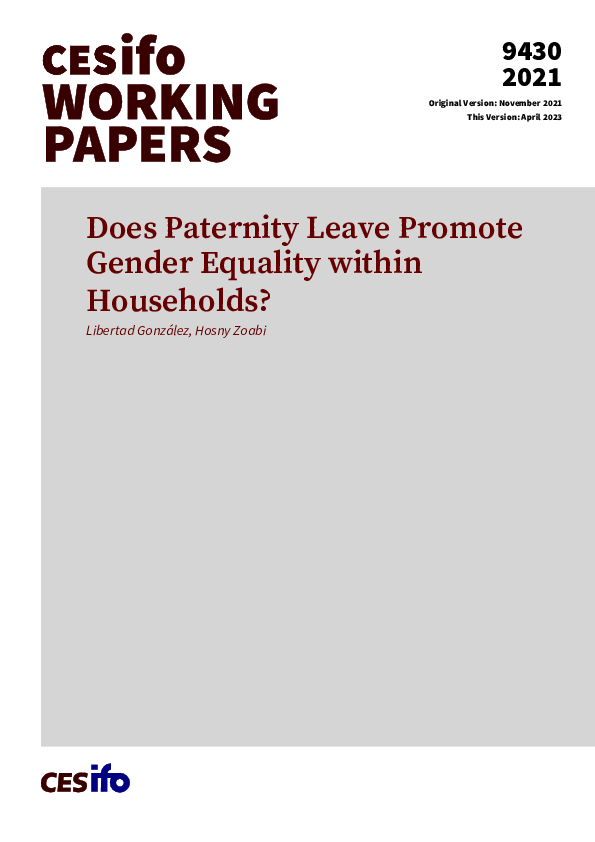Does Paternity Leave Promote Gender Equality within Households?
CESifo, Munich, 2021
CESifo Working Paper No. 9430

We provide a theory of paternity leave and a comprehensive empirical analysis covering a range of outcomes including take up of paternity leave, employment, time use, fertility, and divorce. Our theory predicts that paternity leave has heterogeneous effects for low, intermediate, and high wage gap couples, such that a quota for fathers can break traditional specialization agreements in couples with an intermediate gender gap in wages between the spouses. Using Spanish data and a regression discontinuity design, we first identify the three groups empirically using the model’s predictions regarding the effect of paternity leave on fathers’ leave length. Then we test our model’s predictions on a range of outcomes. We don’t find systematic effects of paternity leave on low or high wage gap couples, while we document that, among intermediate gap couples, the two-week paternity leave introduced in Spain in 2007 led to a 3 percentage-point drop in the fraction having another child, a 4 percentage-point increase in the divorce rate, a persistent increase in fathers’ housework and childcare time of more than an hour per day each, and an increase of 8 percentage points in maternal employment two years after childbirth. Our theory and empirical analysis strongly suggest that small or zero aggregate effects may hide significant heterogeneity. Our results also suggest that paternity leave pushes some couples to become more egalitarian, with women working more and men sharing childcare. Thus, more generous paternity leave policies have the potential to be an instrumental tool in promoting gender equality.
Social Protection
Labour Markets